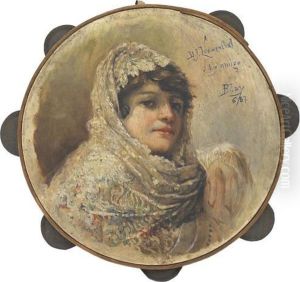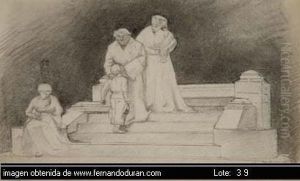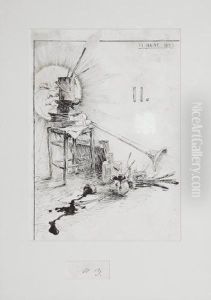Miguel Blay Y Fabrega Paintings
Miguel Blay y Fábrega, born on October 28, 1866, in Olot, Spain, was a prominent Catalan sculptor. He is often associated with modernisme, the Catalan variant of Art Nouveau, which was the prevailing artistic movement at the turn of the 20th century in the region. His work is characterized by a strong sense of naturalism blended with symbolic and modernist elements.
Blay studied at the School of Fine Arts in Barcelona and later in Rome, where he was exposed to the Renaissance masters and contemporary Italian sculpture. This experience deeply influenced his artistic direction, as he began to incorporate a more dynamic and expressive approach to his work. His time in Italy was formative, and he absorbed the academic rigor of the traditional Italian schools while also embracing the new artistic currents of the time.
Upon his return to Spain, Blay became a central figure in Catalan art circles. His sculptures often featured themes of Catalan nationalism and identity, which were of particular significance during this period of cultural renaissance in Catalonia. Blay's work was also recognized internationally; he received numerous awards and honors, including a gold medal at the National Exhibition of Fine Arts in Madrid, and his sculptures were well-received in exhibitions in Paris and elsewhere.
One of his most famous works is 'The Catalan Song' (La Canción Popular Catalana), which showcases his skill in combining allegory with realism and his passion for Catalan culture. His public monuments and private commissions are scattered throughout Catalonia and Spain, with some pieces also found abroad.
Miguel Blay's contribution to sculpture was not only through his artwork but also through his influence on younger artists. He served as a professor at the School of Fine Arts of San Fernando in Madrid and later became the director of the museum in the same city. His teachings and leadership helped shape a generation of Spanish sculptors.
Blay died on January 29, 1936, in Madrid, leaving behind a legacy as one of the most important sculptors in Spanish and Catalan art history. His works continue to be studied and admired for their emotional depth, technical mastery, and cultural significance.


